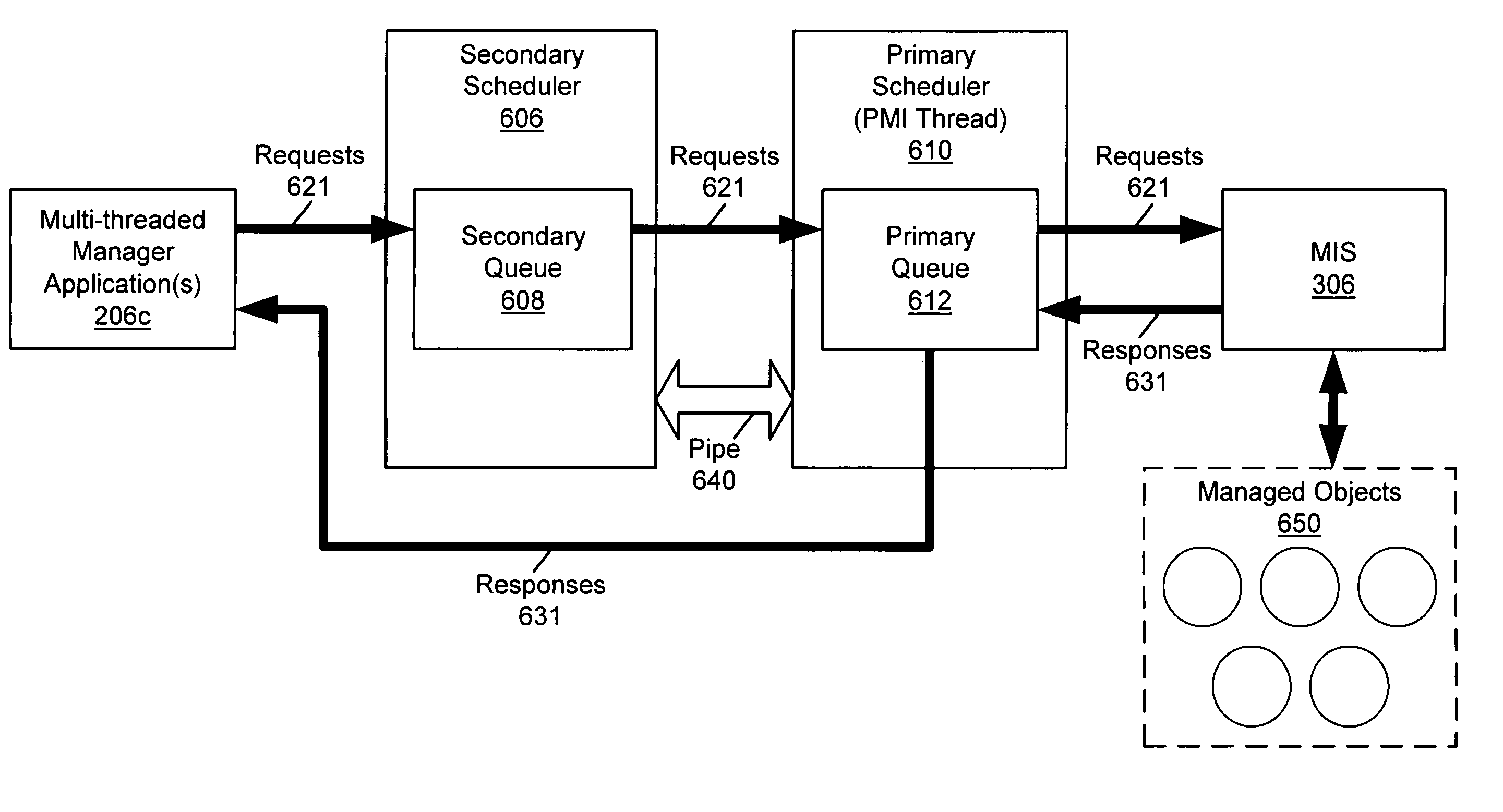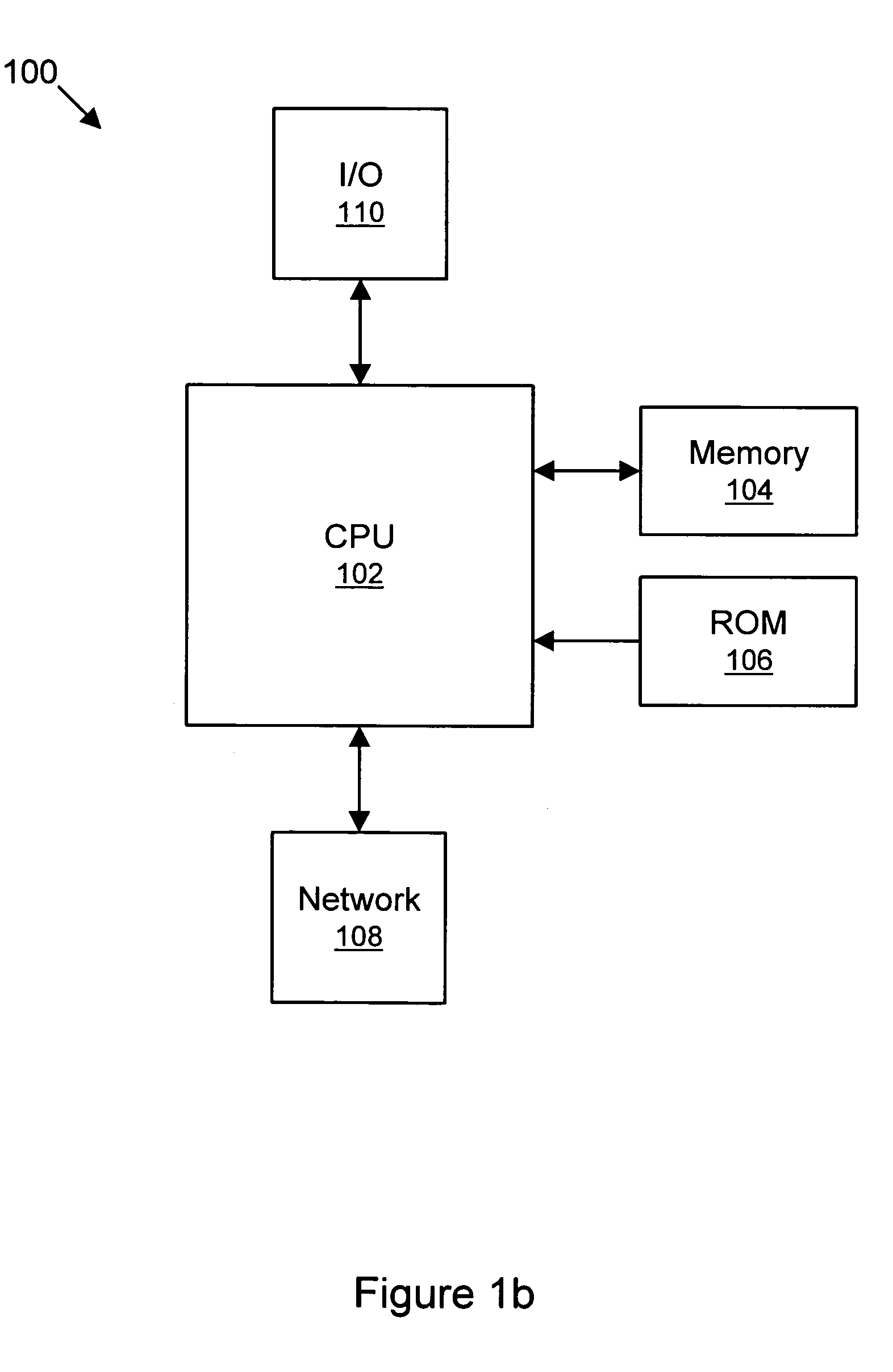Thread-safe portable management interface
a management interface and thread-safe technology, applied in the field of computer software, can solve problems such as data inconsistencies, access collisions, coherency problems, other errors, etc., and achieve the effect of reducing the number of cpu cycles, scalability and performance of management applications that use pmi
- Summary
- Abstract
- Description
- Claims
- Application Information
AI Technical Summary
Benefits of technology
Problems solved by technology
Method used
Image
Examples
Embodiment Construction
FIG. 1b: A Typical Computer System
[0037]Turning now to the drawings, FIG. 1b is an illustration of a typical, general-purpose computer system 100 which is suitable for implementing various embodiments of the system and method for network management as disclosed herein. The computer system 100 includes at least one central processing unit (CPU) or processor 102. The CPU 102 is coupled to a memory 104 and a read-only memory (ROM) 106. The memory 104 is representative of various types of possible memory media: for example, hard disk storage, floppy disk storage, removable disk storage, or random access memory (RAM). The terms “memory,”“memory medium,” and “storage medium” may include an installation medium, e.g., a CD-ROM or floppy disk, a computer system memory such as DRAM, SRAM, EDO RAM, etc., or a non-volatile memory such as a magnetic media, e.g., a hard drive or optical storage. The memory medium may include other types of memory as well, or combinations thereof. In addition, the...
PUM
 Login to View More
Login to View More Abstract
Description
Claims
Application Information
 Login to View More
Login to View More - R&D
- Intellectual Property
- Life Sciences
- Materials
- Tech Scout
- Unparalleled Data Quality
- Higher Quality Content
- 60% Fewer Hallucinations
Browse by: Latest US Patents, China's latest patents, Technical Efficacy Thesaurus, Application Domain, Technology Topic, Popular Technical Reports.
© 2025 PatSnap. All rights reserved.Legal|Privacy policy|Modern Slavery Act Transparency Statement|Sitemap|About US| Contact US: help@patsnap.com



